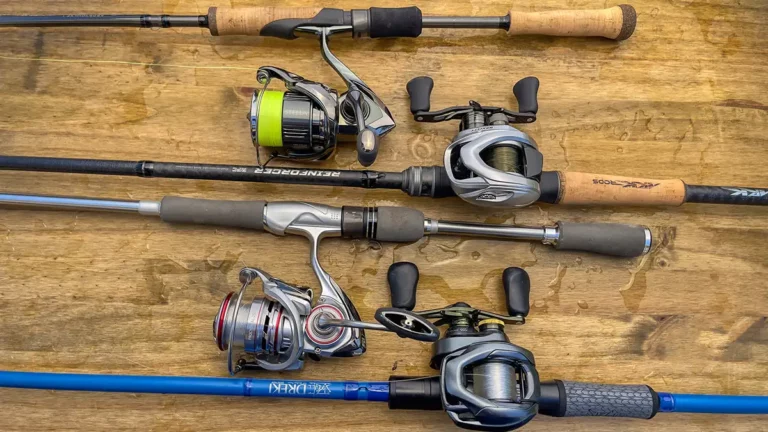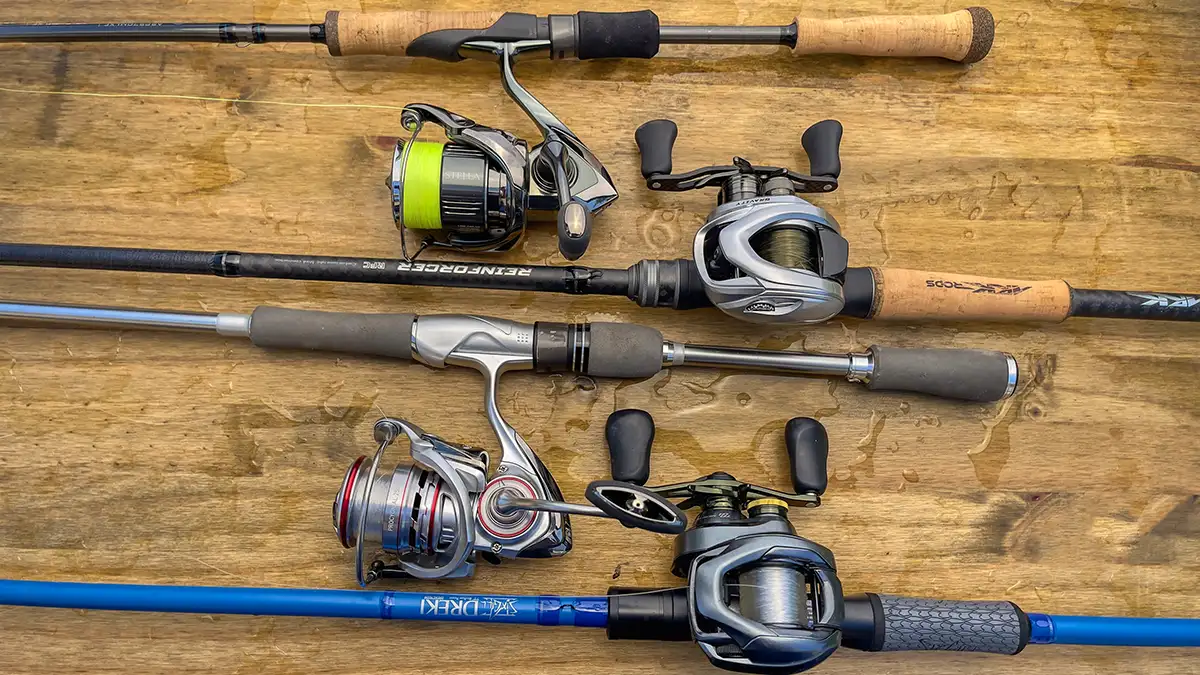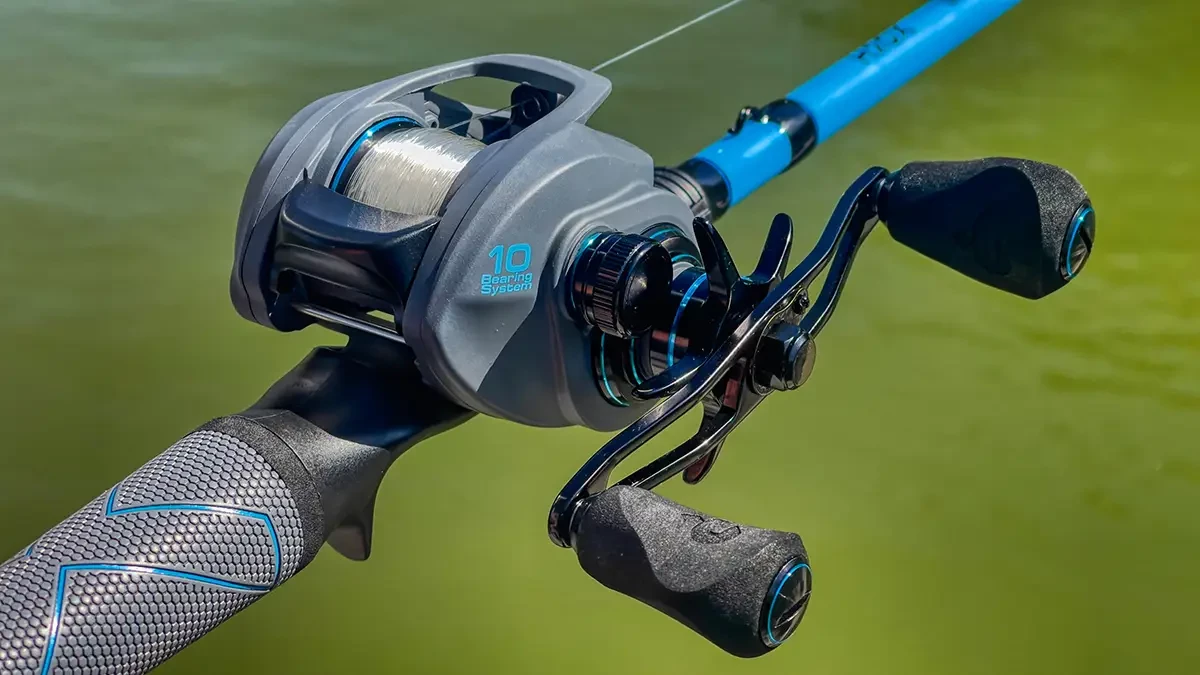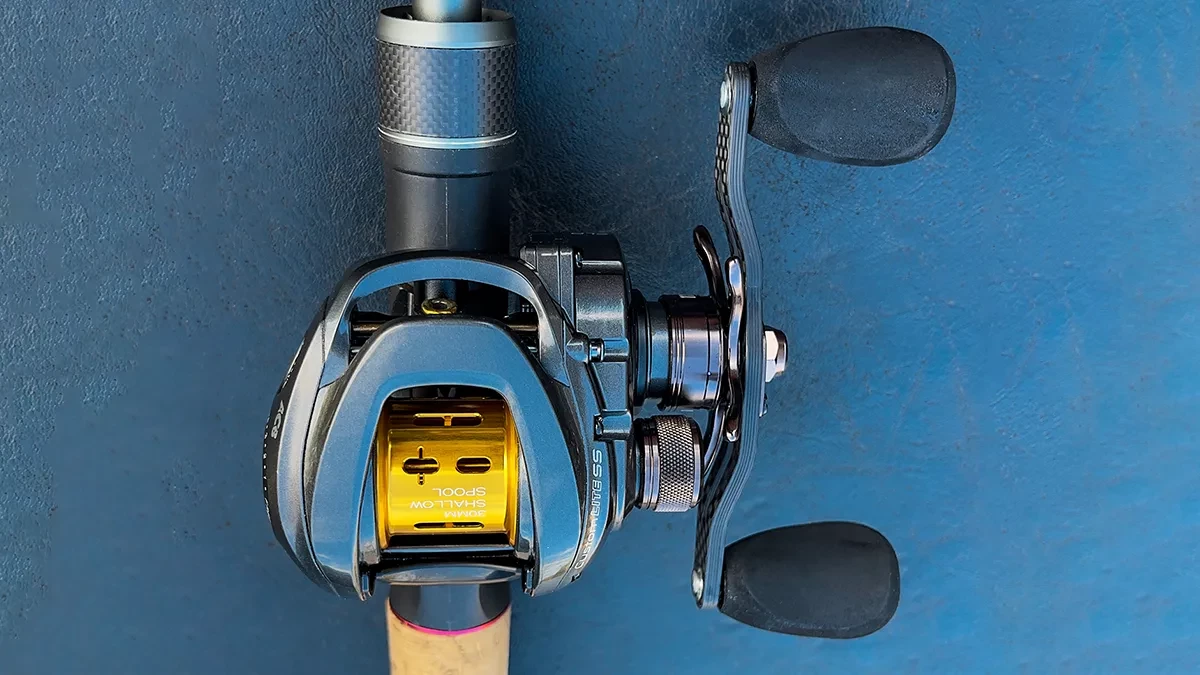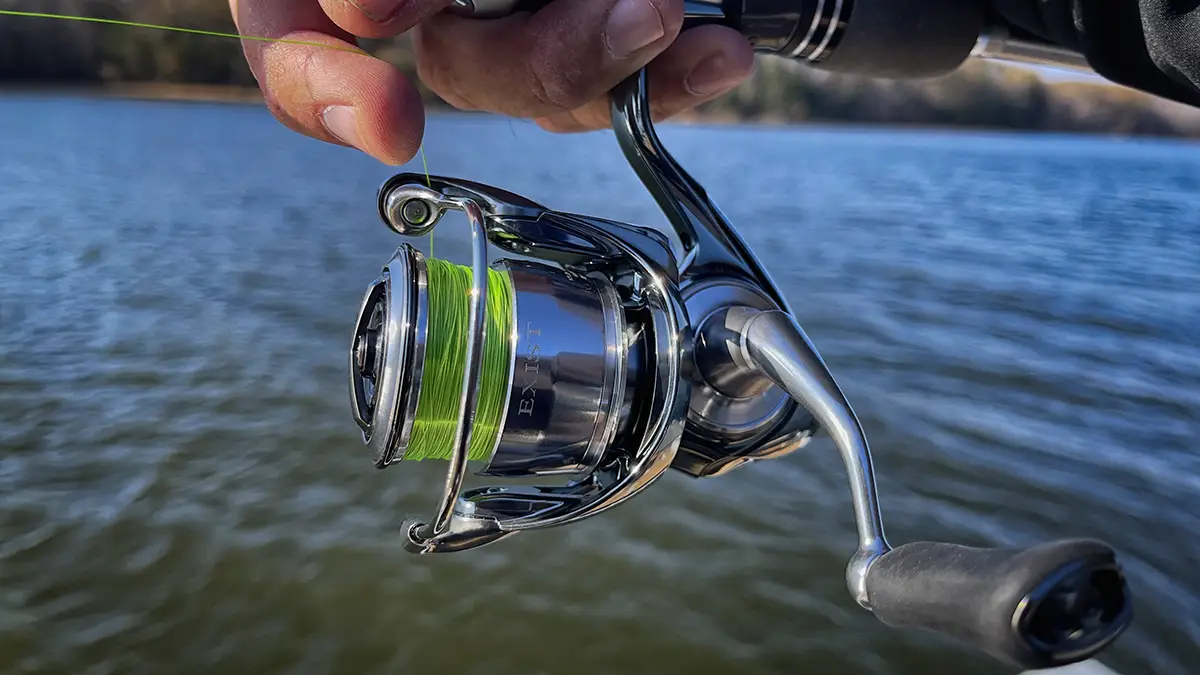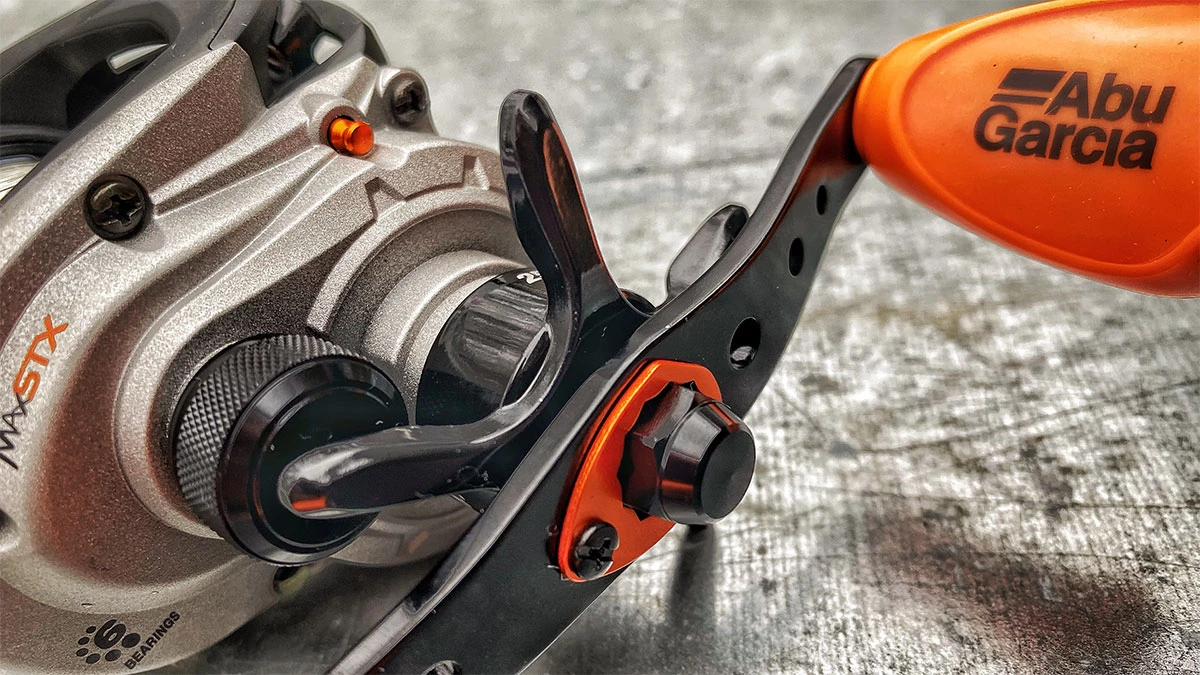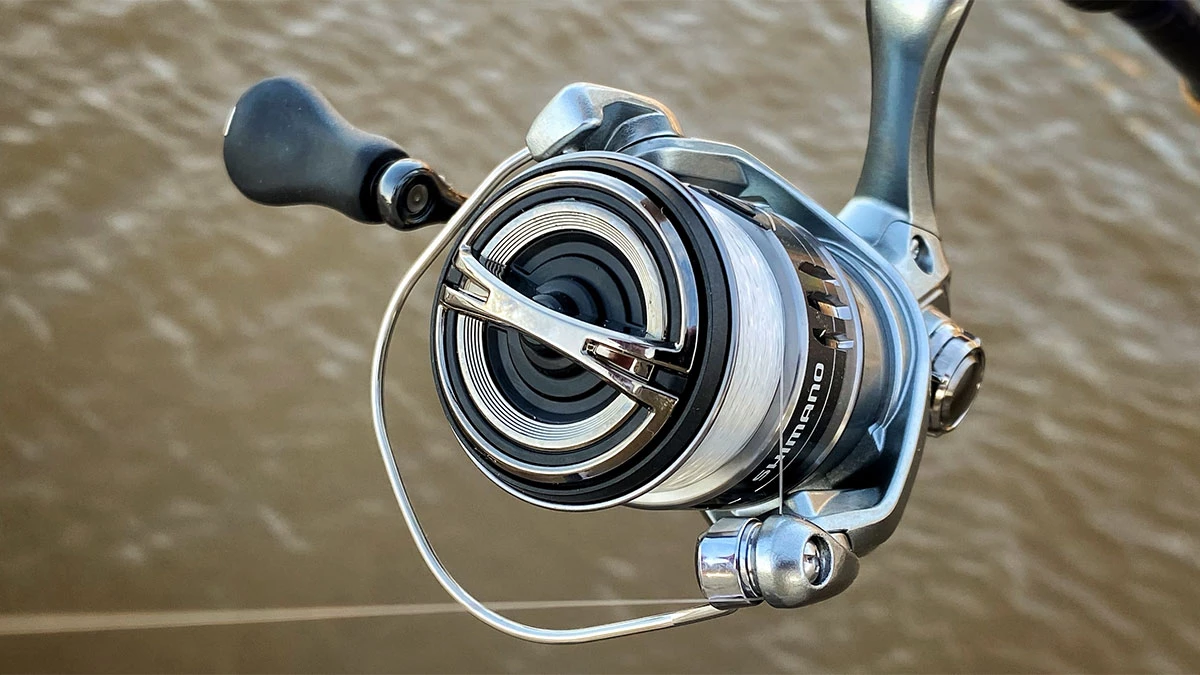Anglers are always asking what is the better option for fishing a baitcaster vs a spinning reel. Truth be told, there may be times when one is better vs the other. For most folks, however, it probably comes down to how they fish, what they plan to fish with and for and where they plan to fish for them. We’ll explain why those things matter in choosing a baitcaster versus spinning reel in a minute.
First, let’s run through the pros and cons of both baitcasters vs spinning reels and then then compare attributes like distance, drag, line size, lure weight and more. And then we can drill down on which one is better for you. And maybe present another option that is somewhat of a compromise between the two.

Baitcasters Pros and Cons
Baitcasters are obviously the “sexy” thing in bass fishing circles as well as for other species in certain situations. While a spinning reel is probably more popular in the multispecies arena, baitcasters are where most anglers aspire to take their fishing as the progress and get more proficient. And there are certainly pros and cons to using a baitcaster for fishing to be considered.
On the PROS side, there is definitely the ability to cast normal weighted lures with heavier line. This is advantageous when you think you might be tangling with large fish, especially large fish that you need to move away from and out of heavy cover without breaking your line. I can easily fish a 5/16 ounce or 3/8 ounce lure on 20 pound fluorocarbon with a baitcasting setup. While that same lure will be a little harder to fish on 20 pound line with a spinning reel.
I also can have more direct control of the lure on my cast, especially in the case of pitching and flipping where you are trying to put your lure directly on the fish’s head without making a sound or splash. That’s harder to achieve with a heavier lure and heavier line on a spinning reel. But I can easily feather the spool with my thumb on a baitcaster and get my bait in and out of likely targets with no noise or commotion.
I can also achieve greater distance with middleweight lures on heavier line with a baitcaster because the spool unwinds the line for me where the friction of the line on the spool of a spinning reel takes away from its overall distance with similar sized line.
On the CONS Side, it’s easy to backlash a baitcaster where the spool spins faster than the lure is pulling line off the reel on the cast and you can end up with knotted and kinked line as a result if you’re not proficient with the tension, brakes and your thumb.
Conventional Baitcasters struggle to throw light lures because the startup inertia requirements are too high and the light lures can’t get the spool spinning at the correct speeds for distance. Now Bait Finesse System Baitcasters can achieve this distance with micro lures because of their special gearing, shallower lighter spools and the lower startup inertia required. We’ll get into that later, but generally speaking a regular baitcaster will struggle with lures under 1/4 ounce.

Spinning Reels Pros and Cons
Similarly, Spinning reels will excel at throwing light lures on lighter lines. Put 10-pound braid on a spinning reel with a medium to medium light rod and you can hum a 1/8 ounce jig or drop shot around with ease.
Spinning reels are also easier to cast without worrying with spool spin speeds, startup inertia, lure weight, wind, etc. Just timing when to let go with your finger is about all there is to learn with casting a spinning reel.
Skipping lures is easier on spinning tackle. So if you want to skip a senko or floating worm around shallow cover, a spinning rod can make that a lot easier on you. Not to say you can’t skip with a baitcaster, but it takes a considerable amount more technique and practice.
However spinning reels struggle to perform as well with heavier lines. The heavier the line gets, the heavier your lures have to be to throw them. So if you want 20 pound fluorocarbon because the cover is very thick, you’re going to have to have heavier lures.
Spinning reels can’t achieve the distance baitcasters can because the line friction coming off the stationary spool takes some inertia off of the lure.
Spinning reels are a lot more susceptible to wind knots, especially with lighter braids. Because the line comes off the reel spool that is stationary, it’s easy to introduce loops and knots if the wind is standing light lures up or the wind is blowing slack back at the reel and causing extra loops to enter into the spool on the retrieve or working the lure.

Baitcaster vs Spinning Reel for Distance
Typically speaking, anglers will generally throw lighter finesse lures farther on a spinning rig than a baitcaster. And anglers will generally throw larger lures like deep diving crankbaits farther with more control on a baitcaster. When you get proficient at controlling the baitcasters brakes and tension, and your thumb becomes better trained, you can achieve greater distances with baitcasters because the free flowing spools and bearings continually feed line on the cast.
A small-diameter braid is the great equalizer on spinning gear. A 10-pound braid on a spinning reel can give you maximum casting distances with a variety of lures. Even a 20-pound braid casts well on a spinning reel. But when you get to 40-pound braid or 15-pound mono or fluoro, the scale tips back to the baitcaster for casting distance. Again it’s friction on the spool and guides on a spinning reel spool that is stationary as opposed to a spinning spool that is feeding line on a baitcaster.
Baitcaster vs Spinning Reel for Beginners
Learning how to cast spinning reel requires less training and dialing in of the reel. Really you just have to master letting go of the line when you start the lure forward in your cast. And thinking about casting up or side arm will give you more distance with spinning reels.
A baitcaster is a little harder to learn, but once you become proficient with managing the spool speed with your tension knob, brakes and thumb, you can employ more tactics to your fishing game.
It’s not to say that once you get good with a baitcaster, that you should get rid of your spinning rod. Anglers like Jacob Wheeler continue to prove that a spinning rod is every bit as valuable as a baitcaster at the top levels of competitive fishing. So we’re not advocating for starting with spinning reels and then graduating to baitcasters. In fact we advocate being as proficient with both and then employing them both where they make the most sense.
Hopefully that is a little clearer to you now.

The Bait Finesse System (BFS) Refinement
One new wrinkle in the last 10 or so years is the concept of bait finesse system that was born out of Japan. While the origins of BFS are a little muddy, we believe the general concept was to take more finesse presentations and present them to fish in very difficult scenarios like ultra clear water, cover, with narrow openings and room to operate. So say a small river or stream in Japan where there is not a lot of room to cast, and the fish are positioned in very tight places around rocks, and other structures and receive a ton of fishing pressure.
And because the fish are so pressured, they needed reels that could present lighter, more natural micro versions of baits to the fish with maximum precision but then still give the angler a fighting chance to get the bigger pressured fish out of the tight quarters. So while many believe it’s just a way to throw lighter lures on baitcasters, it is really a way to present more natural finesse lures to big fish in highly pressured and tough situations on the water.
I have spent the last year perfecting my own BFS techniques and tackle and loving this new avenue of fishing that has opened up to me. I’ve been throwing lures as light as 1/64 ounce on small BFS rods made for trout to catch crappie, bass, bluegill, shell crackers, saugers, catfish and more. It’s opened up a whole new world of fishing to me that I really didn’t realize existed because I have a more refined tool for throwing smaller, lighter, more natural versions in clear pressured waters unlike my big conventional tackle I use in dirtier, less pressured waters.
I never was able to use baitcasting gear to crappie or bluegill fish, and now I am and getting to try a lot of new lures while having increased sensitivity, control and precision and loving all the new options it has opened up.
Again it requires some proficiency with operating baitcasters and special reels and spools to achieve these results. We’ll have a full BFS guide on the site shortly. But thought it was worth a mention since it somewhat bridges the gap between spinning and baitcaster reels.
Summing Up Baitcasters vs Spinning Reels
So that basically covers our thoughts on baitcasters vs spinning reels and when each one is better than the other for different scenarios. I keep a spinning rod or two in the boat at all times. I have a bunch of different baitcaster reels spooled with various pound tests of fluorocarbon fishing line, braided fishing line and monofilament fishing lines. Each combo makes me more efficient and precise with my lure presentations because I’ve matched the reels to what I’m fishing and the technique I’m using.
The best reels are the ones you feel the most comfortable with the lures you intend to use in the places you intend to fish. Understanding where each reel excels and with what lines and lures will lead to you having more enjoyable times on the water. And that’s all we’re really trying to achieve here. Good luck and let us know how you do. We have a bunch of great reviews in our fishing reels section so be sure and check those out if you have questions about specific reels.





